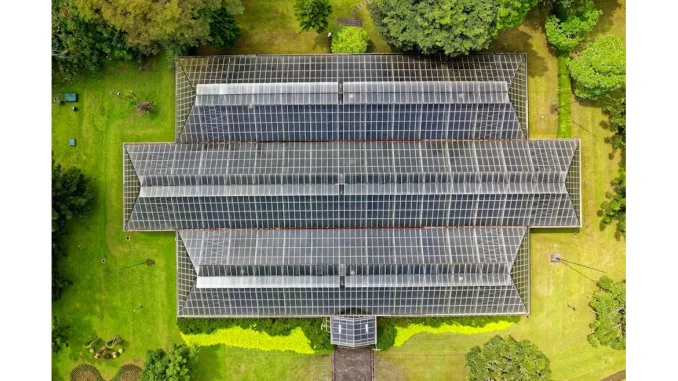
In the dynamic realm of sustainable construction practices, the BREEAM Knowledge Base emerges as a pivotal resource, directing building processes towards eco-friendly initiatives and strict environmental standards. Encompassing waste management strategies to energy-efficient fixtures, BREEAM’s comprehensive guidelines address a myriad of criteria designed to minimise the ecological footprint of buildings while enhancing their overall sustainability. This detailed framework ensures that every facet of building design, construction, and operation adheres to the highest standards of environmental responsibility.
Read more about sustainable development.
At the core of the BREEAM framework is a robust emphasis on recycling and reusing waste streams within building management processes. By prioritising compliant waste streams for recycling or re-use, buildings can significantly lower their carbon footprint and foster a more sustainable environment. This approach not only conserves natural resources but also promotes a circular economy where materials are continuously repurposed rather than discarded. Such practices are instrumental in conserving resources and reducing waste, ultimately contributing to a more sustainable built environment.
A critical component of BREEAM assessments, particularly Rsl 04, focuses on reducing the frequency of building component replacement. This principle ensures that buildings are designed and maintained to maximise the longevity and resilience of their structures. By extending the life cycle of building components, BREEAM encourages sustainable practices that help preserve resources and minimise waste in the long term. This strategy not only benefits the environment but also reduces maintenance costs for building owners and operators, making it an economically viable and environmentally responsible approach.
The role of credits related to occupied spaces in BREEAM assessments underscores the importance of designing buildings that are both functional and sustainable. These credits highlight the necessity of creating spaces that support sustainable living and working environments. Non-maintained lighting, activated solely during emergencies, may be excluded from assessment, emphasising the significance of energy efficiency in building operations. This ensures judicious use of energy, contributing to lower overall consumption and reduced emissions. Furthermore, the integration of energy-efficient fittings is strongly advocated within the BREEAM framework through specific credits. By incorporating sustainable lighting solutions and fixtures in building designs, BREEAM promotes technologies that reduce energy consumption and enhance the overall efficiency of buildings, leading to significant cost savings over their lifespan.
Waste management responsibilities are clearly delineated between building management and tenants, with each party accountable for waste generated in their designated areas. This collaborative approach ensures effective waste management, reducing the overall environmental impact of the building. Measures such as eliminating flicker from emergency lighting systems and establishing thermal comfort criteria for occupied spaces are essential components of BREEAM assessments. These measures ensure that buildings are not only energy-efficient but also provide a comfortable and safe environment for occupants.
The concept of asset classification and performance evaluation is intrinsic to the BREEAM framework. Multiple buildings can be categorised as a single asset based on shared characteristics and management arrangements, streamlining the assessment process and ensuring consistency in evaluating building performance. Owner-occupied assets have the flexibility to achieve credits based on set targets rather than green leases, granting owners greater autonomy in meeting their sustainability goals. Assessors play a crucial role in the BREEAM assessment process, providing comments to elucidate compliance and evidence location, thereby facilitating a transparent and comprehensive assessment process.
Co-living developments, integrating residential units with communal facilities, epitomise the innovative approach to sustainable living championed by BREEAM. These developments not only offer a high quality of life for residents but also promote a sense of community and shared responsibility for sustainability. Flood risk assessments and mitigation measures are integral components of the guidelines, ensuring that buildings are resilient to potential water-related hazards. Additionally, aspects such as water consumption, cycling facilities, and intruder alarm systems are scrutinised in BREEAM assessments to promote eco-friendly practices and ensure building safety and efficiency. From leak detection requirements to energy efficiency calculations, every detail is meticulously examined to uphold the highest standards of sustainability.
As BREEAM In-Use transitions to the Projects platform, the goal is to enhance user experience and streamline quality assurance efficiency. This transition underscores BREEAM’s commitment to continuous improvement and innovation in sustainable building practices. The integration of new technologies and methodologies is crucial in advancing the sustainability agenda and fostering greener, more environmentally conscious building practices.
The BREEAM Knowledge Base sets the gold standard for sustainable building practices, guiding builders, assessors, and stakeholders towards a more sustainable and environmentally friendly future. Adhering to the principles and criteria outlined in the BREEAM guidelines enables buildings to mitigate their environmental impact, reduce resource consumption, and contribute to a more sustainable built environment for future generations. Throughout this comprehensive guide, the BREEAM Knowledge Base serves as a beacon of guidance, steering construction processes towards eco-friendly initiatives and environmental standards. This unified approach ensures that the built environment evolves in harmony with the planet, creating spaces that are not only functional and resilient but also sustainable and inspiring.


Be the first to comment